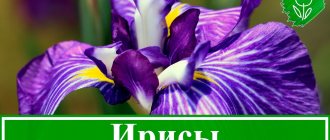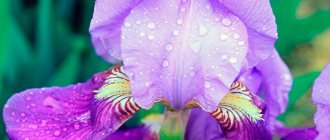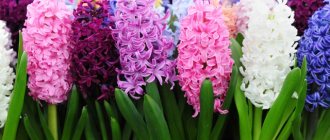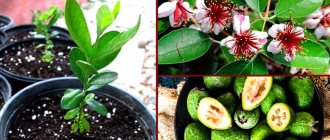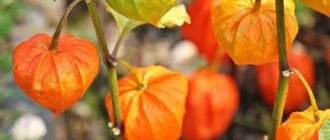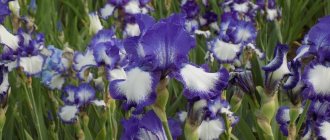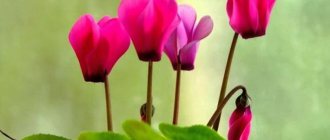Author: Tamara Altova. October 03, 2017
Category: Garden plants.
Fritillary flower (lat. Fritillaria) is a genus of herbaceous perennials of the Liliaceae family, which includes more than one hundred and seventy species that grow wild in the temperate climate of the Northern Hemisphere. Some species of hazel grouse are found in the forests of East Asia, but there are many more of them in the west of this part of the world. The scientific name of the genus comes from the Latin word meaning dice cup, which is roughly the shape of the fritillaria's rim. And the Russian name was given to the plant because of the variegated color of the most common species in Russia - the Russian hazel grouse, which resembles the feathers of a bird of the Grouse family. Today, fritillaries are the most popular bulbous flowers.
Fritillary flower - description
Fritillary flowers are perennial plants that reproduce by underground bulbs consisting of several fleshy scales. Some species have completely fused scales, some only half, there are species with unfused scales, and there are those that have buds in the axil that give life to a new plant. Grouse bulbs are renewed annually. They consist of lower scales, and they usually do not have integumentary scales. A stem rises from the hazel grouse bulb with narrow-linear or oblong-lanceolate leaves, whorled or scattered. Bracts erect or spirally twisted. Large pendulous bell-shaped or cubare-shaped flowers, solitary or forming an umbellate or paniculate inflorescence at the top of the stem, can be colored yellow, red, white, purple, or can be spotted. At the base of each perianth leaf there is a triangular, round or oval depression - a nectary. The fruit of the hazel grouse is a hexagonal, three-lobed capsule with numerous seeds.
Many types of hazel grouse are poisonous because they contain alkaloids, but the bulbs of a species such as the Kamchatka hazel grouse are edible: the North American Indians and Kamchadals called them “northwest rice.” Tubers of some other species were eaten instead of bread. In addition, in Tibetan and Chinese folk medicine, many types of hazel grouse are used as a healing potion.
Flower names, distribution in nature
The Latin name of the genus Fritillaria (Fritillaria) translates as “glass” and indicates the shape of the flower, which actually resembles a bowl or vessel for wine. ,
In nature, hazel grouse grow throughout the temperate zone of both hemispheres, found in meadows and steppes, on rocky slopes of foothills and forest edges in Europe, Asia and North America.
The plant received its name not at all in honor of the famous bird, but because of the variegated color of the flowers, especially the checkerboard hazel grouse.
But the most important in the family is, of course, the imperial hazel grouse, which is popularly also called the Caesar’s crown, the tree of paradise and the tears of Mary.
Planting hazel grouse in open ground
When to plant hazel grouse
Hazel grouse are planted in open ground in the fall, at the end of August or in September. It is advisable to choose a site for them that is well lit by the sun, although this crop also grows well in partial shade. Before planting, hazel grouse bulbs should be kept for half an hour in a solution of potassium permanganate, dried and dusted with charcoal.
Soil for hazel grouse
Fritillaria prefers soil that is well-drained, moderately moist, fertile, but light. Hazel grouse have no special requirements for the composition of the soil, although they grow best in sandy loam soil fertilized with humus. Before planting, the site needs to be prepared: dig up, adding humus or peat, wood ash or lime, and if the soil on the site is heavy, then you also need to add sand.
How to plant hazel grouse
Hazel grouse bulbs are immersed in the soil to the same depth as the bulbs of lilies, tulips and other bulbous flowers: after planting, a layer of soil should lie above the bulb, equal in thickness to twice its diameter. That is, small bulbs of low-growing varieties are immersed by 12-15, and tall ones by 20-25 cm. The distance between the bulbs also depends on the size of the planting material: a gap of 10-15 cm is left between small bulbs, and 25-30 cm between large bulbs. At the bottom of the hole you need to place a layer of coarse sand (fine sand will not work), and if planting is carried out in heavy soil, then it is better to put a layer of peat. The bulb is laid on its side, spreading the roots, but without pressing it in order not to damage it. Then the bulb is completely covered with calcined sand, and the remaining space in the hole is filled with soil.
Features of cultivation
When preparing a site for hazel grouse, it is important to remember: they do not tolerate stagnant water, because... These are steppe and mountain plants! Repeated freezing and thawing of waterlogged soil in early spring and late autumn destroys their bulbs! Therefore, in an area where groundwater is close, before planting it is necessary to make a drainage layer of 20-30 cm of crushed stone, broken brick or coarse sand. We prepare the top layer of soil substrate with fertile, loose, well-flavored leaf humus (preferably from linden or hazel).
So, we prepared the planting area, purchased bulbs ready to bloom this spring or flowering plants in pots. Next, we plant only the bulbs. The planting depth of large bulbs is 15 cm, the distance between plants is 35-45 cm; for small bulbs - 10 cm, the distance between plants is 15 cm. We bury the plant in the soil in the garden right with the pot and admire the flowering. We will plant it in a permanent place at the end of August (in the southern regions - in May), when the leaves naturally wither and turn yellow. It is then that the very tender growth point of the bulb will no longer be so vulnerable.
Low-grouse hazel grouse: r. Russian, b. chess, r. yellow are quite winter-hardy and can winter in central Russia without shelter. Tall species: r. imperial, b. Persian (F. persica) require cover with dry foliage and spruce branches.
When breeding hazel grouse, it is important to remember: cultivated species and forms are propagated by baby bulbs, and wild ones are propagated by seeds. Plants from large bulbs bloom after a year, from small ones - after 2 years, small-bulbous species from seeds - in 4-5 years, large-bulbous species from seeds - in 7-8 years. Interesting: hazel grouse bulbs have an unpleasant, pungent odor, which is believed to repel moles.
It is important to remember : hazel grouse seeds do not tolerate drying out, so they are sown immediately after collection. It’s even better to bury a ripe and already cracked at the seams, but not dried out, box 1-2 cm into the soil. Next, you need to keep this place moist, avoiding waterlogging! We loosen the soil around them, and during the growing season we fertilize them 1-2 times with full mineral fertilizer.
Caring for hazel grouse in the garden
How to care for hazel grouse
Caring for hazel grouse is similar to caring for lilies. Before the onset of frost, the area with planted hazel grouse bulbs is mulched with humus, well-decomposed peat or rotted compost: this covering should be enough for the plants to survive the winter, but if weather forecasters predict severe frosts without snow, then it is better to play it safe by covering the area with spruce branches or mulch. hay. The thickness of the shelter should be 20-30 cm.
As soon as sunny spring days arrive, the shelter is carefully removed, and in early May you will already see the blooming hazel grouse. Caring for flowers is simple: you need to water them, loosen the soil around them, remove weeds, apply fertilizers and protect them from pests and diseases.
Watering hazel grouse
To call hazel grouse moisture-loving flowers would be an exaggeration. Water them moderately, and only during dry periods. Usually the plant has enough natural precipitation. When the flowering of hazel grouse comes to an end, the bulbs are not immediately dug up, allowing them to gain strength and nutrients from the soil, and the area is watered once or twice a month so that the bulbs do not lie in dry soil.
Feeding hazel grouse
The need for fertilizer for hazel grouse is also small: it is advisable to feed them the first time in the third ten days of April, and the second time after flowering. For fertilizing, dry complex fertilizers are used, for example, a tablespoon of potassium sulfate and superphosphate is distributed over 1 m² of land and then the soil is watered abundantly. The hazel grouse also responds well to this feeding: add a tablespoon of Nitrophoska and Agricola for flowering plants to a bucket of humus, mix and spread the humus over the area with the hazel grouse in a layer of 4-5 cm.
Exquisite varieties
This perennial is in most cases represented by varieties of imperial hazel grouse - when the flowers are collected in buds at the crown and decorated with a bunch of leaves (crown).
The most attractive variety in all respects is Maxima Rubra: voluminous flowers - up to 5-7 cm bud length, bright orange with red notes and purple veins . The cultivar is quite tall - up to 1.2 m in height. Maxima is considered a frost-resistant hazel grouse - it tolerates down to -30 ° C, and is undemanding to soils. It will delight you with flowers in April.
Flowers of the hazel grouse Maxim Rubra have a not very pleasant musky smell
The Aurora variety has buds of a bright, piercing carrot color, no more than 4 cm long, but this cultivar itself is capable of growing a stem up to 1.5 m. At the top, the peduncle, like most other varieties of imperial hazel grouse, is crowned with a light green bunch of leaves - the so-called crown. Flowering starts in the 1st–2nd decade of April.
The Aurora hazel grouse has become famous for its beauty from Moscow to Vladivostok
The yellow-flowered variety Lutea is the brightest representative of hazel grouse of all light-colored varieties. Lutea reaches a height of 0.8–1 m, blooms in early May (in the middle zone of our country).
Hazel grouse Lutea - the solar messenger of spring
Hazel grouse Akmopetala is an amazing variety of hazel grouse in all respects. The flowers of the cultivar are drooping, pale burgundy with green markings (length 3 cm). The height of the Akmopetala variety does not exceed 0.4–0.5 m. The plant grows well in the shade.
Hazel grouse Akmopetala - Mr. Extraordinary
The Peach fritillary is called a mourning flower. But rather it is mysterious: violet-gray small funnel-shaped buds densely strew the stem of a tall plant (height up to 1.1 m). Peach blooms in a temperate continental climate in early May.
Peach hazel grouse has become famous for its unusual shades of petals
Meleagris Alba is a low-growing hazel grouse (up to 0.3 m), one of the most frost-resistant. This cultivar takes root well in the conditions of Eastern Siberia, the Urals, and North-West Russia. The peculiarity of the variety is its snow-white small bells with greenish tan marks. Meleagris prefers drained, fertile soil and periodic moisture; it blooms in late May - early June.
Hazel grouse Meleagris Alba - tenderness itself
Imperial hazel grouse Striped Beauty has peach-colored buds with expressive lines of brick-burgundy tones on the petals. The height of the variety is about 0.9 m, the flowers are collected in bunches at the crown, like other varieties of imperial hazel grouse. This is a May variety.
The Striped Beauty hazel grouse has buds decorated with stripes
Hazel grouse transplant
Hazel grouse can be grown in one place for no more than four years, and after that they need to be replanted. Ideally, hazel grouse need to be replanted once every two years, and in an area where bulbous crops have not been grown before, otherwise the risk of flower damage by diseases and pests increases. Preparation of a new site and transplantation of bulbs is carried out in the same time frame and in the same order as the initial planting.
Appearance
Fritillaria, popularly known as hazel grouse, blooms among forest edges and in gardeners' flower beds in the spring. Its bell-shaped flowers stand out sharply against the background of partially melted snow and the first bright green blades of grass.
One variety of this plant is especially noticeable among the awakening nature - Russian hazel grouse. Its flowers are painted in dark shades, but despite this, they are colorful among the spring meadows.
A variety of fritillaria
Hazel grouse breeding
Hazel grouse from seeds
Hazel grouse reproduce by dividing bulbs and seeds, although the generative method is not very popular: you will have to wait seven or even ten years for the first flowering. The seed propagation method is justified only for the industrial cultivation of hazel grouse, when you need to obtain a lot of planting material, and for the sake of obtaining new varieties. Pre-soaked seeds are sown in December to a depth of 1.5-2 cm in boxes at least 15 cm deep, filled with loose soil that does not contain mineral fertilizers or manure. The crops are placed in the basement, where the temperature is kept between 1-2 ºC. In early spring, the boxes are moved to a sunny place in the garden and care is taken throughout the season so that the soil in them does not dry out. When the above-ground part of the seedlings dies off in the summer, the bulbs formed in the soil are selected and stored in dry sand at a temperature of 20 ºC, and in September they are planted in open ground to a depth of 6-10 cm, after which the area must be covered for the winter.
Reproduction of hazel grouse by dividing bulbs
For vegetative propagation, dividing the bulbs is used: every year, each bulb is divided into two parts, since hazel grouse form daughter bulbs infrequently and their number is always small. An onion consisting of two scales is simply broken into two parts, the broken area is treated with crushed coal, the sections are dried so that the wound heals, and parts of the onion are planted in the soil a little earlier than whole bulbs - three weeks after removal from the soil, since during storage they dry out.
Reproduction of hazel grouse by children
Grouse bulbs can be forced to form daughter shoots, since these plants, like hyacinths, have the ability to form children on the wound surface. How to do it? After you remove the bulbs from the soil, use a sharp, sterile instrument to make one or two cone-shaped holes with a diameter of 1.5-2.5 cm on the thickest part of the outer scales of a healthy large bulb. Dry the wounds for several days, place them in storage in dry sand and keep in a well-ventilated, warm area. As soon as the roots grow on the bulb, it is planted in open ground in the order we described. Your task is to prevent the hazel grouse that has grown from the bulb from blooming in the first year by removing the developing buds. When digging up bulbs at the end of the season, be careful: the children formed at the site of the wounds may be small.
Why did the hazel grouse turn yellow? Why doesn't the imperial hazel grouse bloom? Main reasons
Imperial hazel grouse is one of the most beautiful plants that decorate flower beds in spring. It looks great both in group and single plantings, so it gives the gardener the opportunity to show his imagination and create unusual compositions. Like all flowers, it requires special care, otherwise it may not bloom on time. For many gardeners, only green panicles appear in May, which dry out in June; it is clear that this is not enough beauty. What is the problem and why does the imperial hazel grouse not bloom?
First of all, you need to pay attention to the soil. The plant loves loose and nutritious soil. Under no circumstances should fresh manure be added to the planting site, but humus and other fertilizers will come in handy.
It is recommended to plant the bulb on a bed of coarse sand; it is worth ensuring good drainage, because although the plant loves moisture, the hazel grouse (flower) does not tolerate waterlogging and stagnation of water.
Growing the plant requires proper handling of the bulb. It should be dug up annually after the leaves turn yellow and fall off. For two months, the bulbs are heated at a temperature of 30°C, and then moved to a cool place with a temperature of about 18°C.
This is done to form roots and lay flower buds. The bulb is planted back into the ground in the fall.
The reason why the imperial hazel grouse does not bloom may be that the bulbs are too small. If they are already planted, you will have to wait until they grow to the desired size. It is recommended to buy strong and healthy bulbs with a diameter of more than 5 cm, some can reach a weight of up to 0.5 kg. Such giants will delight you with large inflorescences in the first year, and the panicle will grow up to one meter high. When growing plants from seeds, you will have to be patient - they will bloom only after 5-7 years.
The imperial hazel grouse can also suffer greatly from rodents. Photos of corroded bulbs are not uncommon; some gardeners face this problem every year. In winter, rodents have nothing to eat, so they move to gardens, where they feast on tree bark and bulbs of various flowers, and hazel grouse is ideal for them. To save the flower, you should plant daffodils around it, the smell of which repels mice.
The reason why the imperial hazel grouse does not bloom may be waterlogging of the soil. The flower loves moisture, but its excess can lead to rotting of the bulb, in which case the plant simply dies. For the winter, you should take care of reliably covering the flower, although it is frost-resistant, severe frosts and a small amount of snow can still lead to freezing. To do this, you can use dry leaves and spruce branches.
There can be a huge number of reasons why the imperial hazel grouse does not bloom. You should not throw away a plant if it does not bloom for several years in a row. Careful care, changing the planting location, moderate watering, and drying the bulbs in summer can become a tangible impetus for the appearance of beautiful and large flowers next spring.
Hazel grouse after flowering
When to dig up hazel grouse
After the hazel grouse have flowered, they do not immediately lose their attractiveness, but by the beginning of July their greenery begins to turn yellow and die, and then you can start digging up the bulbs without waiting for the ground part to wilt. The bulbs are removed, cleaned of soil and dead scales, washed in warm water, kept for half an hour in a pink solution of potassium permanganate, rot spots, gnaws and other damage are cut out from them, the wounds are treated with a fungicide, sprinkled with wood ash and left in the shade to dry.
How to store hazel grouse bulbs
Dried hazel grouse bulbs are stored in a dry, well-ventilated room at a temperature not exceeding 30 ºC until the end of August or beginning of September. During this time, the roots will grow on the bulbs and they can be planted. During storage, planting material is regularly inspected, damaged or rotten areas are identified and removed, and the cuts are treated with crushed coal.
Storage of planting material
Hazel grouse are planted in the autumn, which means that planting material must be properly stored during the summer.
Plant bulbs should be kept in a dry room with good ventilation. The air temperature should not exceed 30 °C. Under the right storage conditions, the chances of bulb germination increase.
What do flower bulbs look like?
Diseases and pests of hazel grouse
Diseases of hazel grouse
Hazel grouse are resistant to fungal and viral diseases, including the scourge of all bulbous plants - botrytis. Problems with flowers can arise if the rules of care are regularly violated, for example, if the bulbs are constantly waterlogged, the plants can rot. In this case, you need to cut out the rotten areas to healthy tissue, and treat the wounds with ash or crushed coal. Freezing of the bulbs during storage is also fraught with problems: next season, plants from such planting material will develop weakly and may even die. The same fate can await hazel grouse if they were overfed with fertilizers during the past season or if they were dug up at the wrong time.
Pests of hazel grouse
As for pests, the specific aroma of the juice of hazel grouse bulbs repels not only insects, but also rodents - moles and mice. Infection of hazel grouse with pests can only occur if its immunity is weakened as a result of prolonged cultivation in one area. Danger for weakened hazel grouse is represented by the lily beetle - an insect with a red body and a black head, as well as the onion rattle, or onion daylily, the larvae of which can be found on the underside of the leaves. It is the larvae that pose the greatest danger to flowers. Do not miss the moment of their appearance and treat the plant with an insecticide 2 or 3 times with an interval of 7-10 days. The proximity of hazel grouse to lilies of the valley contributes to infection by rattlers.
Distribution and ecology
This flower is found naturally in the European part of Russia, at the foothills of the Caucasus, and in Western Siberia. You can also find it in Ukraine and Kazakhstan. Hazel grouse grows in meadows, among bushes, along rivers and in rocky areas.
Aster flower - what it looks like, leaf colors
Active urbanization and development of fertile lands have hit the natural population of this plant hard. In addition, spring fires (due to human fault or due to natural circumstances) often destroy already rare hazel grouse fields.
Status and rarity category
Russian hazel grouse is considered a rare plant of category III. Refers to decorative species, endemic to the flora of the CIS. In 1988, it was included in the Red Book of Russia. This plant is also protected by the Red Book of Ukraine.
For your information! Another reason for the disappearance of many rare flowers is that in the spring people collect them to create the first spring bouquets, because bright flowers attract attention from afar. To preserve the characteristics of wild nature, every person is obliged to think about the consequences of such actions.
Necessary security measures
According to the law, there are restrictions on collecting Russian hazel grouse for bouquets, its intentional and unintentional trampling, mowing the meadow with the plant before seeds form, and digging up the bulbs.
Note! This variety of hazel grouse is included in the list of plants growing and protected on the territory of the Belogorye Nature Reserve.
If you see such an unusual flower in nature, you shouldn’t pick it
Mysterious and diverse fritillaria
The genus Fritillaria, or hazel grouse, is one of the most complex in all botanical classifications. Sections and subsections, disputes about the identity of species, different growth conditions in nature and even more different requirements for garden soil... When you first get acquainted with the diversity of hazel grouse, it seems that there is only one thing you can do with them - get confused in the diversity. But hazel grouse, despite various obstacles and purely scientific incidents, are very unassuming plants. And individual.
They need a personal approach and careful observation: as a rule, each hazel grouse will tell its owners how best to grow it. They received their name either for the similarity of colors with chess patterns, or for the shape of flowers similar to cups of bells (and the Russian-language name - even for the similarity of variegated patterns with the feathers of forest hazel grouse).
Representatives of the genus Fritillaria have something to boast about. All hazel grouse, without exception, are plants that display flowers in the first half of the garden season. And spring flowering is not the only common characteristic of more than 100 species of fritillaria. Grouse are natural insecticides, the unpleasant smell of which will not hurt in the garden, but will help repel some insect pests. And attractive and original flowering is another common feature.
The flowers of hazel grouse are crowned with strong stems of various bell-shaped shapes, often located under the apical narrow leaves or forming fancy “crowns” with them. And the leaves of hazel grouse are amazingly beautiful. Sharp, linear, in most species they are originally twisted in a spiral at the ends.
Among the hazel grouse, there are some undisputed favorites - everyone's favorites, which are considered one of the most popular garden crops. Based on their characteristics, it is quite easy to navigate the characteristics of each of the 6 groups of hazel grouse.
Hazel grouse (Fritillaria). © Leonora Enking
The imperial hazel grouse (Fritillaria imperialis), which is actually called fritillaria, is a beautifully flowering species of hazel grouse that has already become legendary, and has not in vain earned its royal name. This plant is from the most common group of hazel grouse in landscape design - Petilium, which includes plants with large massive bulbs. In imperial hazel grouse, the height of peduncles can reach 1.5 m, while the lower part of the shoots is densely covered with broadly lanceolate leaves, up to 10 cm wide and twice as long.
The leafy shoots are a bit like lilies. At the top of the peduncle there are narrow leaves that form a “crown”. Below it, bells of flowers bloom in a circle, looking down. Hard and strong peduncles rise from the center of the bulbs, they grow literally before our eyes: immediately after the snow melts and the start of growth, they rush upward at an amazing pace, reaching their maximum size in 2 weeks. The downward-facing buds gradually open, their arrangement on the peduncle reminiscent of shades on chandeliers.
Traditionally, each inflorescence consists of 6 flowers. Another unique feature of this hazel grouse: as it blooms, the downward-facing bells rise, first positioned horizontally, and then completely turning upward. The seed pods of this hazel grouse are equal in size to the bells themselves and crack beautifully (but the seeds remain inside and do not spill out).
Imperial hazel grouse (Fritillaria imperialis). © Carl Lewis
Despite the fact that the basic color of the imperial hazel grouse is brick-orange, over many centuries of breeding this plant, many original varieties have been bred, offering to admire various shades of yellow, red, brown and orange. The best varieties of imperial hazel grouse today include:
- "Rubra" with dark red inflorescences only about 60 cm high;
- one and a half meter “Rubra Maxima” with a red Madeira color;
- yellow varieties 'Indora', 'Lutea' and 'Maxima Lutea';
- golden-orange variety "Prolifera".
The Petilium group also includes other large hazel grouse with densely leafy shoots and apical inflorescences-wreaths of bell-shaped flowers, crowned with a tuft of leaves:
Radde's hazel grouse (Fritillaria raddeana). © bric
Radde's fritillary (Fritillaria raddeana) is a fritillary up to 80 cm high with dark lanceolate leaves and large, broadly bell-shaped, pale yellow or cream flowers in loose clusters of inflorescences, in which all the flowers look in different directions. This hazel grouse wakes up early, endures late frosts, miraculously thawing after icing, but blooms only in early May;
The spectacular orange-colored Edward's Fritillary (Fritillaria eduardii) is a perennial about 1 m tall, with densely leafy powerful stems and umbrella-shaped inflorescences consisting of an upper tuft of leaves and bell-shaped flowers directed to the sides with a diameter of up to 6 cm.
Edward's hazel grouse (Fritillaria eduardii). © beartomcat
The largest group of fritillaries, Eufritillaria, which combines fritillaries with sparsely leafy stems, flattened medium-sized bulbs and few bell-shaped flowers on the tops of shoots, also has its favorites.
Mikhailovsky's hazel grouse (Fritillaria michailovskyi) is one of the most beautiful two-colored hazel grouse. The bluish narrow leaves and thin peduncles emphasize the beauty of single, wide bell-shaped flowers with a dark burgundy color that contrasts with a yellow border. The flowers of this hazel grouse look like variegated “skirts”.
Mikhailovsky's hazel grouse (Fritillaria michailovskyi). © Simon Marshall
Checkered hazel grouse , or Variegated hazel grouse (Fritillaria meleagris) is a beautiful plant in height from 20 to 40 cm with a weakly leafy stem crowned with an inflorescence of drooping bell-shaped flowers. Regardless of the base color of the petals, this hazel grouse is easy to recognize: the specks are sometimes almost square in shape, dark, brownish-violet, giving the plant a variegated and graphic appearance.
The whimsical magic of bells that bloom tirelessly and the thin, graceful leaves with a bluish color are truly impressive in any composition. Checkerboard hazel grouse bloom in April or May and grow in both bright sun and partial shade. In addition to the basic form, this hazel grouse has many attractive varieties:
- snow-white Alba uniform;
- the purple-green variety 'Artemius', whose patterns resemble snakeskin;
- white-green variety "Aphrodite"
- almost black variety 'Charon';
- dark purple variety "Mars";
- large, dark red variety “Jupiter” with a catchy pattern;
- white-purple variety "Poseidon";
- pink-flowered variety 'Pink Eveline' with a bright checkerboard pattern;
- red-violet with light spots “Saturn”;
- violet-purple with light specks “Orion”, etc.
Fritillaria pale-flowered , or pallidiflora - a taller half-meter species with a densely leafy stem and a white or light yellow inflorescence with a light green tint, consisting of 10-12 bells. This is a sun-loving and tender plant.
Fritillaria pallidiflora or Fritillaria pallidiflora. © fero fero
It is also worth paying attention to:
- half-meter tall Fritillaria acmopetala with narrow pale leaves, two-centimeter green-burgundy bells hanging in pairs on the tops of the stems;
- reaching 40-50 cm in height, the bluish-leaved Fritillaria Elwesii (Fritillaria elwesii) with purple flowers covered with green stripes, elongated and slightly lower;
- with green-purple stripes on flowers Hermon fritillary (Fritillaria hermonis);
- similar Earhart's Fritillary (Fritillaria ehrhartii) with eggplant-purple flowers;
- the unique Davis's Fritillary (Fritillaria davisii) - only about 15 cm high with waxy, elegantly shaped flowers that shimmer in all shades of purple and brown, and the similar Greek Fritillary (fritillaria graeca Boiss. & Spruner), whose petals are decorated with a central green vein;
- dwarf, up to 15 cm in height Golden fritillary (Fritillaria aurea) with golden-yellow flowers covered with an orange checkerboard pattern;
- medium-sized, green flowers with a brown checkered pattern Whittall's Fritillary (Fritillaria whittallii);
- - , adaptable Fritillary - shaped flowers covered in brown spots;
- jade low Goose Fritillary (Fritillaria gussichiae) with caramel spots inside the corolla;
- unique bronze species Pyrenean fritillary , or Black hazel grouse (Fritillaria pyrenaica) with bronze bells covered with gold spots, hiding a golden mottled throat;
- spotted yellow-orange Yellow fritillary (Fritillaria lutea). Currently, there is no clear classification of this species in taxonomy;
- equally low, but with cap-like jade-green bells with a yellow edge Bithynian hazel grouse (Fritillaria bithynica);
- tiny, broad-leaved, with dense foliage and brown-green speckled, broadly bell-shaped flowers. Fritillaria crassifolia subsp. poluninii;
- Flaunting a unique cherry-ink color, the broad-leaved fritillary , up to 20 cm high with unusual tulip-shaped leaves (Fritillaria latifolia);
- half-meter tall, with contrasting checkerboard patterns on large bells of greenish-purple flowers, Oriental Fritillary , or Slender Fritillary (Fritillaria orientalis);
- offering to admire the contrast of the dark brown color of the outer side of the petals and the olive color of the inner, Assyrian hazel grouse (Fritillaria assyriaca);
- tall, up to 1 m checkerboard fritillary , or checkerboard fritillary , or small fritillary (Fritillaria meleagroides) with long drooping leaves and dark, red-brown flowers, decorated with an unclear variegated pattern and yellowish tips of the petals;
- graceful and touching, with single flowers on thin stalks and bright leaves Caucasian fritillary (Fritillaria caucasica) with a unique bluish-violet color;
- reaching 80 cm in height with brown-purple “patterned” flowers, Mountain Fritillary (Fritillaria montana).
Fritillary hazel grouse (Fritillaria acmopetala). © Carl Lewis
Hermon hazel grouse (Fritillaria hermonis). © Chloris
Elwes's hazel grouse (Fritillaria elwesii). © Sue Clamp
Eastern hazel grouse, or thin hazel grouse (Fritillaria orientalis). © naturgucker
Broad-leaved hazel grouse (Fritillaria latifolia). © SKas
Bithynic hazel grouse (Fritillaria bithynica).
© Martin Ogden The profusely flowering fritillaries, growing from lily-like scaly bulbs, are grouped under the group Liliarhyza. It includes:
- Related hazel grouse (Fritillaria affinis) with large inflorescences of bell-shaped flowers with an unstable yellow-purple color;
- variegated two-flowered fritillary (Fritillaria biflora) with miniature but numerous chocolate-brown flowers with light spots and an emerald stripe on the outside of the petals;
- forest Kamchatka hazel grouse (Fritillaria camschatcensis) up to 60 cm high with triangular leaves located in whorls along the stem and purple or bronze funnel-shaped flowers with a bright pattern inside;
- The modest hazel grouse (Fritillaria pudica) up to 30 cm high with pendulous orange-sun bell flowers;
- Maximowicz's hazel grouse (Fritillaria maximowiczii) up to 40 cm high with linear leaves and single, large lilac-green flowers;
- bright yellow, with almost imperceptible specks on the outside and a brown checkerboard pattern inside the flowers. Gray fritillary (Fritillaria glauca);
- dwarf David's Fritillary (Fritillaria davidii) with brown-red flower.
Kamchatka hazel grouse (Fritillaria camschatcensis). © Tab Tannery
Two-flowered hazel grouse (Fritillaria biflora). © pete veilleux
Related hazel grouse (Fritillaria affinis).
© dragonlight53 Persian hazel grouse (Fritillaria persica) is the only species included in the Teresia group. This is a tall, large and very elegant species, about 1 m high, with a rare pyramidal inflorescence consisting of 20-30 bell-shaped drooping flowers, similar to small bells. The plant appears as an elegant drop in flower beds. In addition to the basic form with a dark purple color, there are also Persian hazel grouse with light green, cream, brown color and even two-color combinations.
Persian hazel grouse (Fritillaria persica). © Don McClane
A rare, but no less beautiful group of hazel grouse is Rinopetalum. It combines fritillaries with an unusual shape of flowers directed downward, with translucent petals, a lily-shaped shape and rare solid colors. This group includes:
- light pink ariana ;
- showy, with soft pink flowers and pubescent stems, Fritillaria stenanthera;
- white-blue, with anemone-shaped flowers Bukhara fritillary (Fritillaria bucharica);
- the amazingly showy, lily-like pink and white Fritillaria Karelinii (Fritillaria karelinii).
Karelin's hazel grouse (Fritillaria karelinii). © Aveter
Bukhara hazel grouse (Fritillaria bucharica). © croylelond
Ariana hazel grouse (Fritillaria ariana).
© sword lilly The genus of hazel grouse also includes Korolkovia Severtsova , or Fritillaria sewerzowii - a plant with fuchsia-shaped flowers of yellow-brown color, very elegant and wide leaves, seeming dark and beautiful at the same time.
Korolkova Severtsova, or Severtsova's Fritillary (Fritillaria sewerzowii). © bric
Grouse are used in garden design:
- to place touching spring accents - in groups imitating small natural clusters;
- in flower beds and mixborders with continuous flowering;
- in large flower beds and ridges with partners, who will then hide the empty spaces;
- small dense spots on the lawn or to decorate groups of shrubs and trees;
- as a spring landscape accent;
- in rock gardens, at the foot of rock gardens as individual accents;
- in pots and containers;
- grown for cutting.
Mountain hazel grouse (Fritillaria montana). © DHochmayr
Caucasian hazel grouse (Fritillaria caucasica). © Lazaregagnidze
Checkered hazel grouse, or checkerboard hazel grouse, or small hazel grouse (Fritillaria meleagroides).
© sylvere corre The best partners for hazel grouse : daffodils, tulips, anemones, muscari, and other spring bulbs.
Difficulties in growing
In addition to too wet soil, other factors can disrupt the flowering process and lead to the death of hazel grouse. For example, drafts or north wind. It is worth taking care in advance to choose an area where there will be a windless atmosphere (for example, behind the wall of a building or gazebo, near dense bushes).
Another reason for the lack of flowering in Russian hazel grouse is that the bulb size is too small. The roots must be firmly established in the soil and the plant must gain strength. This may take 1-2 years after planting.
This is what the boxes with fritillaria seeds look like
